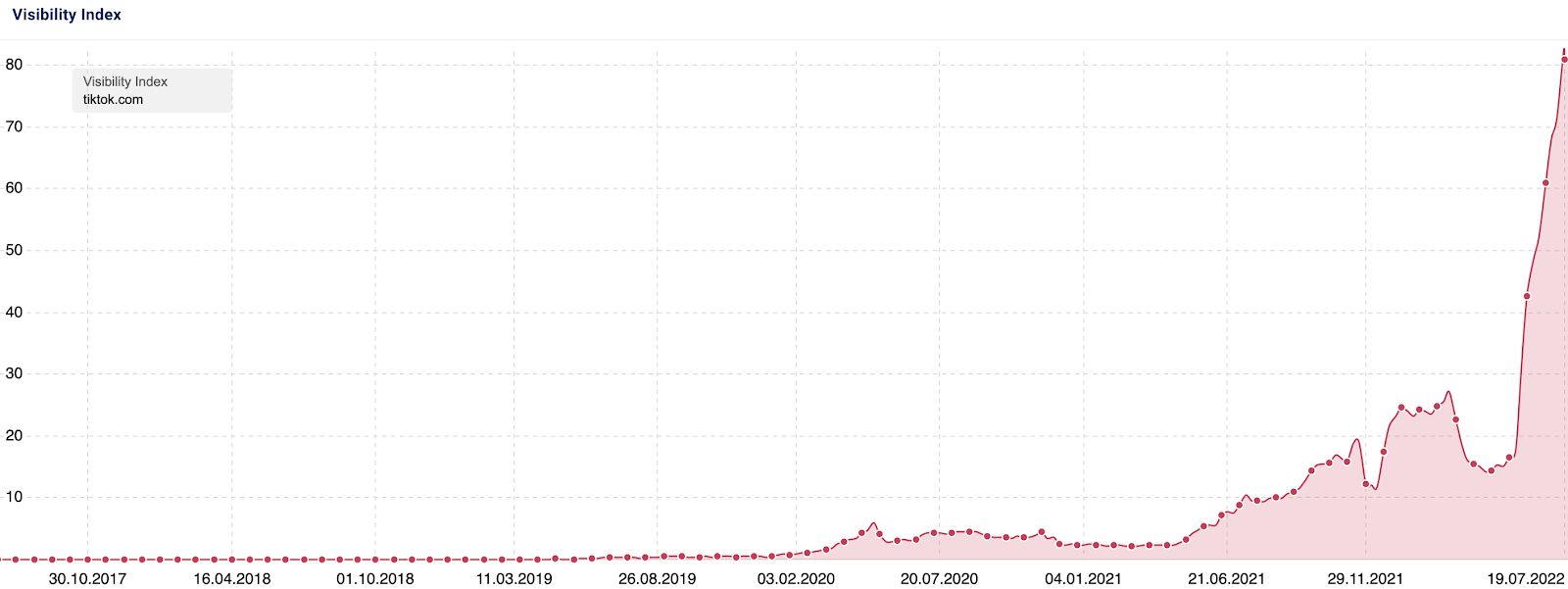Google Search Was Headed in This Direction Years Ago
Google Bard is all the hype right now. As Google continues to roll out Bard in its new Search Generative Experience, SEOs will need to learn how to adjust. But if you were paying attention, you could see that this was the direction Search was headed in years ago.

Google recently revealed its next-generation of Search, which featured AI-generated search results, more prominent social media and video placements, and new options for ecommerce stores to rank. Below is a sneak peak of this new Search experience if you haven’t already seen it.
With our new generative AI experience in Search, you’ll get even more from a single search. You’ll be able to quickly make sense of information with an AI-powered snapshot, pointers to explore more and natural ways to ask. #GoogleIO pic.twitter.com/jgzz97DzEv
— Google (@Google) May 10, 2023
The reveal was met with both excitement and criticism, as many of Google’s updates often are. On one hand, there’s real concern from brands that Google will continue to eat up clicks from their sites and use their content to train its language model.
The opposing side welcomes AI and all the (still untapped) potential it could provide to Search. They feel this iteration of Search is more user-centric by serving results as quickly and in as many different formats as possible.
Whatever your feelings are about Google’s AI demo, it’s hard to argue that Google wasn’t hinting in this direction years ago. Let’s take a look.
Google-generated answers are being implemented at scale
Google consuming clicks from publishers and business websites in the form of featured snippets, People Also Ask, and knowledge boxes is not a new phenomenon. As famously researched by SparkToro, 50% of Google searches in 2019 resulted in no clicks to a web property. That rose to 65% in 2020, and will likely continue to trend upwards as contextual AI answers become front and center in Search.
Right now, conversations with Bard can be described as impersonal, but this will undoubtedly change as it continues to evolve and understand our search patterns and preferences. The goal for Bard is to get you from Point A (search) to Point B (result) without having to click-through to another website. Whether that’s helping you find your next bluetooth speaker, to answering novel questions about the universe.
Video is becoming the preferred medium for consumption
There has been extensive psychological research on the vastly decreasing attention spans from younger generations. This has led to the rise of more short-form, snappier content to fit as much value and entertainment in as little time as possible.
Video has emerged as the preferred medium for this type of content, and it’s why TikTok has become massively popular in recent years. It’s also why Google is leading heavily with its rivaling YouTube Shorts. In fact, Shorts were shown on three separate occasions on Google’s AI unveiling video. See for yourself below.
Google has always understood the growing preference for video.
According to a Moz study from 2020 analyzing searches containing a video result, 94% of those videos were hosted on YouTube. This was Google hinting to brands that they should start taking video more seriously and baking it into their content strategy. In 2023, video has become table stakes for remaining competitive in Search.
How serious should I take YouTube Shorts?
Anecdotally, I was part of a video team that was tasked with growing a B2B brand’s YouTube channel. The strategy was led by Shorts – hypothesizing that YouTube would provide us a search boost. The results were a 528% growth in views in just two months. I’ve also heard from other brand managers that Shorts is their best-performing style of video content, by far.
Social media respected as a primary information source
For millions of young adults, social media has become a primary source for keeping up with the latest trends, reading about breaking news stories, and being community members of their favorite online personalities. We know that nearly half of U.S. adults under 30 say they trust information they see on social media as much as they trust information from national news publishers.
This isn’t news to Google. At a 2022 conference, Google SVP Prabhakar Raghavan stated “new internet users don’t have the expectations and the mindset that we have become accustomed to. In our studies, something like almost 40% of young people, when they’re looking for a place for lunch, they don’t go to Google Maps or Search, they go to TikTok or Instagram.”
Eating into Search presents a real danger to Google. So instead of competing against social media content, Google has decided to display it more prominently in the form of ‘Perspectives’.
Original insights from what Google perceives as an expert or authoritative content creator can be expected to show up more often in Search. In fact, an analysis from Rise At Seven shows that this type of perspective content (as it relates to TikTok) has exploded on Google since mid-2021. We can reasonably predict that this will only continue to grow.

Google mentioned in a recent blog, “In the coming months, we’ll roll out an update to this system that more deeply understands content created from a personal or expert point of view, allowing us to rank more of this useful information on Search.”
What does this all mean for marketers, creators, and brands?
If you’re a content creator
With a greater emphasis on highlighting credible authors and authoritative voices from social media, you may see benefits from Google’s updates.
As Google attempts to marry the traditional Search experience with that of social media feeds and forums, your content could have greater discoverability with audiences who may not be as active on apps like TikTok, Twitter, or Reddit. This can open up the possibilities for new content ideas.
Answering specific questions in your content, tying them to local search results (e.g. “my top 10 brunch spots in Chicago”), and bringing your unique perspective are all ways to remain visible in Search.
If you’re an SEO or content marketer
With a declining share of clicks expected to go to web properties, SEOs and content marketers will be on the hook for identifying creative ways to bring traffic to their sites. They’ll also be tasked with scaling content production with the help of AI – but proceed with caution.
While AI tools like Bard and ChatGPT have led to massive leaps in productivity, relying on it as your primary content arm can have its drawbacks.
As we’ve seen in Google’s demo, brands and creators that bring net-new information, insights, and opinionated stances could be at an advantage in Search. Churning out AI-generated articles with no distinct angles can put you on the fast-track to getting lost in the crowd.
Instead, hone in on topics that speak directly to your target audience. Know exactly who you’re for and say it clearly in your content, even if it means sacrificing search volume for specificity.
Tired 👎
Top email marketing templates for Shopify stores.
Wired 👍
Minimalist design aesthetic email marketing templates for small Shopify stores.
Since Google will be providing more contextual answers, they’ll need to identify which content is legit and which content brings no value to the search. Content uniqueness (as described above) is one way Google will attempt this, the other way is domain authority.
We know that one of the best ways to show Google you’re a trusted and authoritative site is by building high-quality backlinks. So, if you’re a backlink specialist or run a link agency, you could see an uptick in business as Search becomes even more competitive.
In the meantime, join the Search Labs waitlist to get an early look at the next-generation of Search as it slowly begins to roll out. And if you haven’t already, start to familiarize yourself with Bard to get a gist of the type of results it returns.
From there, go into Search Console and look at the variety of long-tail keywords you’re already ranking for. Add these into Bard and see how it structures the answer. Start taking notes! The sooner you acclimate yourself to AI-powered Search, the better you’re positioned when it becomes the norm.
If you’re a B2B brand
If your funnel today relies heavily on inbound, especially coming from organic search, it’s time to hit the drawing board.
First, think of how you can integrate more outside creators with your in-house marketing team. This can be affiliates, micro-influencers, social media personalities in your niche, and so on. Getting creators on your side who already engage with your target market is a great way to get ahead of Google’s updates as they begin to roll out.
Second, if you’ve been putting off multimedia, use Google’s demo as a sign it’s time to adopt another content channel. My recommendation would be starting with YouTube, as we can speculate that Shorts will populate search results at a growing rate. If you’re completely lost with where to start, use my basic framework below for video ideas:
- Identify your best performing top-of-funnel (TOFU) articles. These are your how-tos, what is, tips, best practices, and other educational topics. This data can be gathered from Search Console or GA4.
- Create a series of three non-promotional YouTube Shorts and one main explainer video based on each article. Prioritize topics that are already showing video carousels in Search.
- Roll out these videos over several weeks to show YouTube you’re sticking to a consistent publishing schedule. Consistency wins.
- Embed your explainer videos on each article to start funneling existing traffic onto your YouTube channel. This will help you build momentum outside your blog.
Lastly, keep building with the traffic you own, such as your newsletter. Regardless of algorithm changes or new Search features, your newsletter audience will stay consistent. Don’t neglect this audience who’s already opted in to hear from your brand. In fact, I’d say your email lists are even more valuable, since we’re unsure of the extent that Google’s updates will affect your website visibility.
If you’re curious to learn more about Google’s Search Generative Experience (SGE), they released an in-depth 19 page report that explains the purpose of SGE, how it’ll work, and its limitations when it comes to search results.





